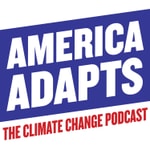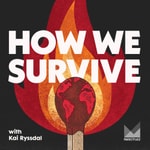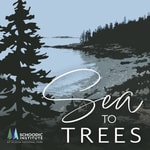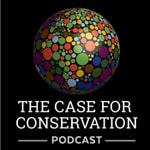Designing Nature's Half: The Landscape Conservation Podcast – Détails, épisodes et analyse
Détails du podcast
Informations techniques et générales issues du flux RSS du podcast.
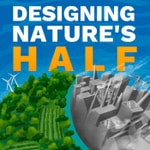
Designing Nature's Half: The Landscape Conservation Podcast
Rob Campellone and Tom Miewald
Fréquence : 1 épisode/15j. Total Éps: 11

Classements récents
Dernières positions dans les classements Apple Podcasts et Spotify.
Apple Podcasts
🇬🇧 Grande Bretagne - naturalSciences
05/11/2024#93🇬🇧 Grande Bretagne - naturalSciences
04/11/2024#75🇩🇪 Allemagne - naturalSciences
04/11/2024#95🇬🇧 Grande Bretagne - naturalSciences
03/11/2024#63🇩🇪 Allemagne - naturalSciences
03/11/2024#83🇬🇧 Grande Bretagne - naturalSciences
02/11/2024#45🇩🇪 Allemagne - naturalSciences
02/11/2024#63🇩🇪 Allemagne - naturalSciences
01/11/2024#50🇩🇪 Allemagne - naturalSciences
29/10/2024#87🇩🇪 Allemagne - naturalSciences
28/10/2024#76
Spotify
Aucun classement récent disponible
Liens partagés entre épisodes et podcasts
Liens présents dans les descriptions d'épisodes et autres podcasts les utilisant également.
See all- https://nca2023.globalchange.gov/
11 partages
- https://www.u-school.org/theory-u
8 partages
Qualité et score du flux RSS
Évaluation technique de la qualité et de la structure du flux RSS.
See allScore global : 78%
Historique des publications
Répartition mensuelle des publications d'épisodes au fil des années.
Trailer
Saison 1 · Épisode 1
lundi 4 décembre 2023 • Durée 00:32
Join us as we delve into the evolving world of conservation, where we explore the shift from siloed planning and management to an innovative, collaborative approach to designing sustainable and resilient landscapes. Subscribe to Designing Nature's Half: The Landscape Conservation Podcast.
Empowering Landscape Partnerships: A Journey Towards Sustainability & Resilience
Saison 1 · Épisode 1
jeudi 28 décembre 2023 • Durée 24:50
In This Episode:
- Motivating landscape stakeholders and partners about landscape conservation, design, sustainability, and resilience.
- Broadening understanding of large landscape conservation efforts.
- Encouraging conversations among stakeholders and experts.
Featured Discussions:
- The multi-faceted goals of the podcast (00:01:52 - 00:05:15)
- Why a landscape conservation podcast now? (00:08:15 - 00:13:54)
- Landscape partnerships (00:15:17 - 00:17:19)
- Landscape conservation design (00:17:22 - 00:19:23)
- 50-year transformation (00:19:26 - 00:22:11)
Resources Mentioned:
- PNW Landscape Conservation (00:03:19 - 00:04:25)
- The iCASS Platform: Nine Principles for Landscape Conservation Design (00:17:22 - 00:18:44)
- E. O. Wilson and the Global Biodiversity Framework (00:11:30 - 00:11:48)
For More Info:
- ...or participation inquiries, visit www.designingnatureshalf.com.
Credits:
- Research/Writing/Editing/Production by Rob Campellone & Tom Miewald;
- Cover Art/Logo by Lucas Ghilardi;
- Intro/Outro Voiceover by Tom Askin;
- Music Composed & Performed by Aleksey Chistilin via Pixabay.
Including Diverse Voices in Sustainable Landscape Design
Saison 1 · Épisode 10
mardi 30 avril 2024 • Durée 47:14
Key Discussion Points:
- Sustainability encompasses more than just conservation; it involves meeting all societal needs without favoring one value over another.
- Landscape design is a proactive rather than reactive approach to work towards sustainability.
- Engaging diverse stakeholders around common values rather than perceived threats on the landscape.
- Identifying compatible objectives between diverse stakeholders is key to designing sustainable landscapes. When aligned properly, different reasons driving actions can still lead to mutually beneficial outcomes.
- Inclusivity is crucial – ensuring that underrepresented groups have a voice at the table helps avoid repeating historical patterns of inequity and environmental injustice.
- Tackling historical patterns of inequity through inclusive decision-making processes involving underrepresented communities.
- The importance of sustainability in designing landscapes that meet societal needs without compromising ecological values.
For more information about collaborative efforts in conserving our natural world while respecting social dynamics, visit www.designingnatureshalf.com.
Resources:
· Southeast Conservation Adaptation Strategy Partnership
· Southeast Conservation Blueprint
Exploring the Climate Crisis and Adaptation on National Wildlife Refuges in Alaska and the Pacific
Saison 1 · Épisode 2
mardi 9 janvier 2024 • Durée 49:45
In This Episode:
- Guest: Robin West, retired Regional Chief, National Wildlife Refuge System
- Robin shares climate change-related insights obtained over the course of his 35-year career in Alaska and across Hawaii and the remote Pacific Islands.
Key Discussion Points:
- [14:53] Landscape Impacts Due To Climate Change: Receding sea ice and its impacts on polar bears and local communities, Spruce bark beetle infestations in forest habitats, drying lake impacts on waterfowl, and more.
- [20:13] Indigenous Perspectives: Insights on the Alaska Native Claims Settlement Act and the implications of climate change on native populations.
- [22:29] Kenai National Wildlife Refuge: An introduction to this unique refuge that balances wilderness preservation with industrial activities like oil & gas development amidst high public use visitation.
- [35:36] Sea Level Rise Concerns: Sea level rise threatens atolls' critical habitat for seabirds and marine life breeding grounds.
- [42:45] Adaptation Approaches: A "three-legged stool" approach that emphasizes managing carbon emissions, conducting science-based planning, and promoting public education and outreach.
Resources:
- NOAA 2023 Arctic Report Card (https://arctic.noaa.gov/report-card/report-card-2023)
- Climate Change and Wildfire in Idaho, Oregon, and Washington (https://www.climatehubs.usda.gov/hubs/northwest/topic/climate-change-and-wildfire-idaho-oregon-and-washington#:~:text=Climate%20change%20will%20result%20in,Warmer%20springs);
- Impact of Sea-Level Rise and Climate Change in Pacific Ocean Atolls (https:www.usgs.gov/centers/pcmsc/science/impact-sea-level-rise-and-climate-change-pacific-ocean-atolls)
- Public Land Statistics 2022 (https://www.blm.gov/sites/default/fikes/docs/2023-07/Public_Lands_Statistics_2022_pdf). 
Exploring Climate Adaptation with Doug Parsons, Host of America Adapts Podcast
Saison 1 · Épisode 3
mercredi 24 janvier 2024 • Durée 35:42
In This Episode:
- Guest: Doug Parsons, Director: America Adapts Media; Host: America Adapts: The Climate Change Podcast
- Doug shares climate change adaptation insights obtained over the course of his career with multiple Federal and state agencies and, more currently, as a podcast host.
Key Discussion Points:
- [01:44] The Path to Adaptation: Discover how Doug first dipped his toes into climate adaptation in Queensland, Australia, before making waves across Florida and eventually at a national level through his podcast.
- [05:21] From Policy to Podcasts: Hear about Doug’s transition from working within government agencies on climate change initiatives to creating a platform that informs and influences policy through storytelling.
- [13.37] A Growing Network: Find out how America Adapts has become an essential resource for professionals seeking guidance on adapting their careers or organizations’ strategies towards resilience against climate impacts.
- [27:59] Impactful Conversations: Uncover insights from nearly 200 episodes, in which diverse voices discuss everything from urban planning challenges due to rising sea levels to community-based adaptations in Africa.
Key Takeaways:
- The natural resource sector has been pioneering adaptation efforts long before it became mainstream attention.
- Communication plays a critical role – podcasts can serve as powerful tools for education around wonky subjects like climate change adaptation.
- There is potential yet untapped synergy between fields such as landscape conservation design and broader adaptive measures discussed throughout various sectors impacted by changing climates.
Resources:
- America Adapts: The Climate Change Podcast
- Jobs: American Society of Adaptation Professionals
- Adaptation Planning for Natural Resource Professionals (Planning Guidance)
- Fifth National Climate Assessment
- Decision Support Tool: Forerunner
- National Park Service Climate Response Strategy
- Scenario Planning
- Schoodic Institute
The Conundrum of Wildland Fire: Balancing Ecological Benefits and Community Safety
Saison 1 · Épisode 4
mercredi 7 février 2024 • Durée 45:46
In This Episode:
- Guest: Steve Markason, Founder/Principle at Teton Wildfire Mitigation Team, LLC.
- Steve discusses the increasing extent and severity of wildland fires and the need to build resilient landscapes that include communities.
Key Discussion Points:
-
Understanding Large-Scale Wildfires: Steve shares insights on how large-scale wildfires have evolved over time and what that means for designing resilient landscapes.
-
Wildland-Urban Interface Challenges: As communities expand into forested areas, the risks increase—highlighting the need for fire-adapted community planning.
-
Ecological Benefits vs Risks of Fire: The dual nature of fire as both beneficial and destructive is explored, emphasizing its ecological role when occurring at optimal times and places.
-
Climate Crisis Impact on Fire Patterns: Data indicating an increase in area burned since the 1980s points to a correlation between higher temperatures and more extensive wildfires.
-
National Cohesive Strategy Overview: A look at how this strategy guides nationwide coordinated efforts in wildfire management through three tenets:
- Safe & Effective Wildfire Response
- Creating Fire-Adapted Communities
- Restoring & Maintaining Fire Resilient Landscapes
-
Restoration Efforts & Prescribed Burns: This is a discussion around prescribed burns as tools for maintaining healthy ecosystems while managing public safety concerns.
-
Community Responsibility & Planning: Steve emphasizes homeowner involvement in building within wildfire-prone areas as part of creating adaptive strategies against wildfires.
Resources:
- Teton Wildfire Mitigation Team
- EPA Climate Change Indicators: Wildfire
- Fire-Adapted Communities (USDA Forest Service)
- National Cohesive Wildland Fire Management Strategy (USDA Forest Service)
- Resilient Landscape Video (USDA)
- Sublette County Community Wildfire Protection Plan
Tackling Complex Systems: Landscape Conservation Through Participatory Design Using Models
Saison 1 · Épisode 5
mercredi 21 février 2024 • Durée 47:16
Guest: Dr. Ronald J. McCormick, an ecologist with the Bureau of Land Management
Topic: Complex Systems Theory and its Application in Landscape Conservation and Design
Key Points Discussed:
1. Complex Systems Theory: Dr. McCormick sheds light on how landscapes are much more than just areas of land; they're intricate ecological and social systems that require a nuanced understanding.
2. Ecological Modeling: The conversation explores using conceptual models as tools to better understand these complex systems and their myriad interactions.
3. Landscape Conservation Design: A favorite topic of Dr. McCormick and our co-hosts, which involves designing sustainable landscapes through collaborative participation to combat the climate crisis and biodiversity loss.
Insights Gained:
1. The Importance of Scale: How changing levels within a system can drastically alter the drivers, context, and constraints affecting it.
2. Model Limitations & Utility: Discussion around common pitfalls in modeling efforts at various scales – emphasizing that while all models have limitations, some provide useful insights when appropriately applied.
3. Incorporating Human Factors: Acknowledging human influence is crucial in landscape conservation design – economic factors, societal needs, and resource availability all play pivotal roles.
4. Local Knowledge is Key: Leveraging local expertise alongside scientific data enriches the understanding required for effective landscape management decisions.
Episode Highlights:
1. Ron emphasizes embracing complexity rather than oversimplifying landscapes into components that may miss critical interconnections or scale-specific phenomena.
2. He critiques over-reliance on certain types of ecological models without considering broader contexts or potential novel situations like those posed by climate change.
3. The discussion circles back to practical advice for stakeholders interested in landscape conservation design—highlighting conceptual modeling as a valuable step and stressing the importance of boundaries within any model used for decision-making processes.
Resources:
1. The iCASS Platform: Nine Principles for Landscape Conservation Design (Campellone et al., 2018)
2. Toward A Unified Ecology, 2nd Edition (Allen & Hoekstra, 2015)
3. Dragnet Ecology – ‘Just the Facts, Ma’am’: The Privilege of Science in a Postmodern World (Allen et al., 2001)
4. The Ecosystem Approach: Complexity, Uncertainty, and Managing for Sustainability (Waltner-Toews, Kay, and Lister, 2008)
5. The Collapse of Complex Societies (Tainter, 1988)
Assessing Landscape Conditions: A Key Aspect of Landscape Conservation Design
Saison 1 · Épisode 6
lundi 4 mars 2024 • Durée 01:00:06
Guest: Pat Comer, Chief Ecologist (retired) with NatureServe
Topic: Assessing Landscape Conditions: A Key Aspect of Landscape Conservation Design
Key Points Discussed:
-
Assessing Landscape Conditions: The conversation begins by breaking down assessment into two categories: current conditions (risks and vulnerabilities) and plausible future conditions (scenario planning).
- Technical Nature of Assessments: Emphasis is placed on the highly technical nature of assessment work. Whether integrated landscape assessments or other forms, such tasks are often compiled by experts like Pat Comer and NatureServe.
-
Documenting At-Risk Status of Terrestrial Ecosystem Paper (2022): Pat discusses the results of his paper which details ecosystem risk assessments.
-
Climate Vulnerability Assessment Paper (2019): Another publication by Pat focuses on applying climate vulnerability assessments to major vegetation types in Western United States.
-
Mapping Zones for Adaptation Paper (2023): A third paper Pat co-authored with Emily Seddon explores using vulnerability assessment results to map out zones for adaptation strategies.
Episode Highlights:
NatureServe Overview: Pat provides insights into how NatureServe operates as an umbrella organization for state natural heritage programs. He outlines their mission to compile standardized data sets that answer foundational ecological questions.
Multidisciplinary Challenges: The discussion touches upon challenges when compiling multidisciplinary information essential for holistic ecosystem understanding. It emphasizes collaboration among scientists from different fields to agree upon standards necessary before engaging broader community stakeholders.
Social-Ecological Integration: Reflecting on progress made towards integrating social science with ecological data, Pat shares optimism about expanding methodologies that encompass diverse perspectives beyond just ecological expertise—a critical aspect needed for comprehensive landscape planning efforts.
Provided Resources:
-
Comer, P., and Seddon, E. (2023). Climate Change Adaptation Zones for Terrestrial Ecosystems—A Demonstration with Pinyon-Juniper Woodlands in the USA
-
Comer, P., Hak, J., and Seddon, E. (2022). Documenting at-risk status of terrestrial ecosystems in temperate and tropical North America.
-
Comer et al., (2019). Habitat Climate Change Vulnerability Index Applied to Major Vegetation Types of the Western Interior United States
Spatial Design in Landscape Conservation: An Interview with Hugh Possingham
Saison 1 · Épisode 7
mardi 19 mars 2024 • Durée 47:14
Hugh Possingham, Professor of Mathematics and Professor of Ecology at the Unversity of Queensland, Australia, shares his expertise in biodiversity conservation, spatial planning and decision science in protected area networks, and Marxan, a spatial prioritization decision support tool. The discussion revolves around the ambitious global initiative “30x30,” which aims to protect 30% of Earth’s land and sea by 2030.
Key Points from the Episode:
- Spatial design is one of four key attributes of landscape conservation design, alongside convening stakeholders, assessing landscape conditions, and strategy design.
- Guest expert Hugh Possingham is recognized as a pioneering figure within conservation planning, specializing in spatial prioritization.
- Marxan software, created by Possingham’s team, has been instrumental worldwide in collaboratively identifying networks of priority conservation areas.
- Biodiversity loss remains a critical issue globally; effective management and representation are crucial components often overlooked in protected area systems.
- The challenge posed by invasive species highlights the importance of managing ecosystems effectively beyond merely establishing protected areas.
- Funding gaps for biodiversity conservation could potentially be filled through corporate accountability, where businesses contribute to being nature-positive as part of their sustainability goals.
Innovations & Insights:
- Systematic Conservation Planning: This approach includes various steps such as problem definition, implementation, monitoring, and principles like representation and irreplaceability.
- Multi-Disciplinary Stakeholder Involvement: Successful spatial design requires participation from non-specialists to decision-makers across different fields involved in landscape stakeholder processes.
Challenges Mentioned:
- Declines in biodiversity continue at an alarming rate due to ineffective management practices that fail to focus on productive landscapes rich in species diversity.
- There exists a significant funding gap between what is necessary for conserving biodiversity versus what is currently available through government grants and philanthropy.
Resource:
- Hugh Possingham's Published Papers
Collaboration and Co-production: Key Elements of the Midwest Conservation Blueprint
Saison 1 · Épisode 8
mercredi 3 avril 2024 • Durée 55:11
Key Topics Explored:
- The goals and collaborative nature of the Midwest Landscape Initiative (MLI).
- How MLI bridges gaps across various stakeholders - moving beyond traditional terminology towards more inclusive community-building language.
The Role of Technology & Data:
- This is an introduction to the 'Midwest Conservation Blueprint,' an essential basemap aiding regional priority-setting for land and water conservation efforts.
- A discussion on how data-driven approaches inform iterative updates to these blueprints, incorporating public feedback and expert insights.
Success Stories & Practical Insights:
- Strategies employed by MLI, including rapid prototyping processes ensuring annual improvements based on user engagement and scientific advancements.
Resource:

